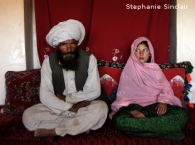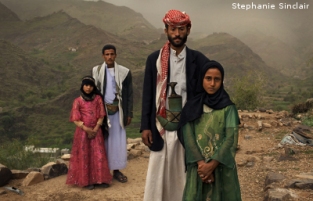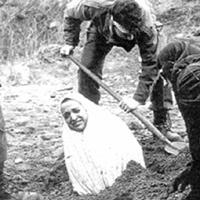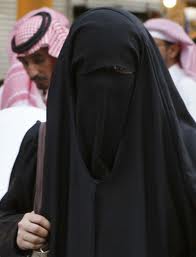Alçak Cinsi Sapıklar
Aşağıdaki haberi okuduktan sonra kızmamak mümkün değil.
Allah tarafından bize güzel örnek olarak tanıtılan son peygamber Muhammed’e kendisinden 45 yaş küçük 9 yaşında bir kızla evelendiğini ve daha nice iftiraları atan Buhari, Tirmizi, Muslim, İbni Hanbel, Ebu Davud, İbni Majeh, Taberi, Kurtubi, İbni Kesir, Şaffi gibi müşrik yalan uzmanlarını izleyen sünni ve şii mukallitler peygamberin en büyük düşmanlarıdırlar (6:112-116).
Allah’ın en büyük nimeti olan AKILLARINA ihanet ederek, önlerine konulan her nakli ve rivayeti, her menkıbe ve hikayeyi hayvanlar gibi yeyerek Allah’ın dinini/sistemini sarıklı ve sakallı cahilliyye uzmanlarından oluşan bir şirketin uydurduğu rezalet mezheplerine çevirenler her felaketi hakkediyorlar.
Islami Reform için Manifesto kitabının PDF versiyonunu www.19.org sitesinden BEDAVE indirip okuyunuz, okutunuz!
11-year-old girl married to 40-year-old man
August 5th, 2012
By Samuel Burke
Before their wedding ceremony begins in rural Afghanistan, a 40-year-old man sits to be photographed with his 11-year-old bride. The girl tells the photographer that she is sad to be engaged because she had hoped to become a teacher. Her favorite class was Dari, the local language, before she had to leave her studies to get married.
She is one of the 51 million child brides around the world today. And it’s not just Muslims; it happens across many cultures and regions.
Photographer Stephanie Sinclair has traveled the world taking pictures, like the one of the Afghan couple, to document the phenomenon. Christiane Amanpour spoke with Sinclair about a book which features her photographs called, “Questions without Answers: The World in Pictures by the Photographers of VII.”
Faiz, 40, and Ghulam, 11, sit in her home prior to their wedding in rural Afghanistan in 2005.
Amanpour asked Sinclair if the 11-year-old Afghan girl married in 2005, and others like her, consummate their marriages at such an early age. Sinclair says while many Afghans told her the men would wait until puberty, women pulled her aside to tell her that indeed the men do have sex with the prepubescent brides.
Sinclair has been working on the project for nearly a decade. She goes into the areas with help from people in these communities who want the practice to stop, because they see the harmful repercussions.
“Whenever I saw him, I hid. I hated to see him,” Tehani (in pink) recalls of the early days of her marriage to Majed, when she was 6 and he was 25. The young wife posed for this portrait with former classmate Ghada, also a child bride, outside their mountain home in Yemen.
In Yemen, a similar picture. Tehani and Ghada are sisters-in-law photographed with their husbands, who are both members of the military. Like most of the girls, Tehani didn’t even know she was getting married, until the wedding night. She was six years old.
Tehani describes how she entered the marriage, “They were decorating my hands, but I didn’t know they were going to marry me off. Then my mother came in and said, ‘Come on my daughter.’ They were dressing me up and I was asking, ‘Where are you taking me?’”
Sinclair says, “This harmful, traditional practice of child marriage is just so embedded in some of these cultures that the families don’t protect them as they should.”
The subjects do know they’re being photographed and Sinclair tells them the topic she is working on. She does tell them that there is teen pregnancy in places like the U.S., but for the societies she’s photographing it’s even worse that 13-year-old girls are pregnant and unmarried.
Nujoud Ali, two years after her divorce in Yemen – when she was only ten years old – from her husband, more than 20 years her senior.
Another one of the photographs Sinclair took is of a Yemeni girl named Nujood Ali. In a rare turn of events, Ali managed to get a divorce at age 10.
“A couple months after she was married, she went to the court and found a lawyer – a woman named Shada Nasser and asked her to help her get a divorce, and she was granted [it],” Sinclair says. “It’s definitely rare and Nujood became kind of an international symbol of child marriage, because she was able to do this. And I think she’s inspired a lot of other girls and other organizations to support these girls, to have a stronger voice.”
Leyualem, 14, is wisked away on a mule by her new groom and groomsmen in Ethiopia.
Sinclair has documented the practice outside of the Muslim world. In a Christian community in Ethiopia, she captured the image of a 14 year-old girl named Leyualem in a scene that looks like an abduction. Leyualem was whisked away on a mule with a sheet covering up her face. Sinclair asked the groomsmen why they covered her up; they said it was so she would not be able to find her way back home, if she wanted to escape the marriage.
Kaushal ,10, and Rajni, 5, participate in the marriage ceremony in Northern India.
Sinclair travelled to India and Nepal, and photographed child marriages among some Hindus.
A five-year-old Hindu girl named Rajni was married under cover of night: “Literally at four o’clock in the morning. And her two older sisters were married to two other boys,” Sinclair says. “Often you see these group marriages because the girl and the families can’t afford to have three weddings.” In the five-year-old girl’s case, Rajni will continue to live with her own family for several years.
Rajni, 5, was woken up around 4 am to participate in the wedding ceremony. Here, she is carried by her uncle to her wedding in India.
Girls aren’t always the only ones forced into marriage. Sinclair wanted to photograph child marries in India and Nepal, because sometimes the boys entering a marriage are also young. “And often they’re victims just as much of this harmful traditional practice,” she says.
Sinclair told Amanpour that she hopes her photographs would not only highlight the problems to westerners, but also show people in the areas where this takes place that if the girls continue to be taken out of the population to forcibly work at home, that their communities suffer as a whole.
“It’s a harmful traditional practice that is slowly changing. We just want to have it change even faster.”













